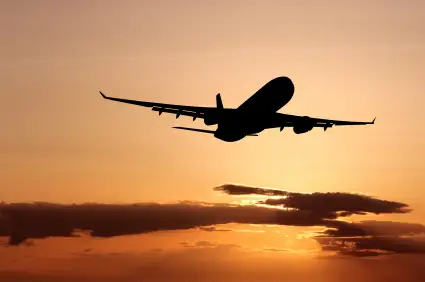
Updated below, Oct. 23, 1:45 p.m
Something strange happened 37,000 feet over Minnesota on Thursday. A Northwest aircraft flying from San Diego dropped off radio contact roughly an hour before its arrival in Minneapolis, and reemerged 150 miles off course. The pilots claim they were distracted by a “heated discussion over airline policy” and “they lost situational awareness.” But many think there is another explanation: The pilots were asleep.
The good news is that passengers never knew the plane was off course, and the pilots safely turned the aircraft around and landed in Minneapolis—albeit an hour late.
The bad news is that we are once again faced with the realization that pilot fatigue policies are inadequate—and potentially dangerous. Back in April, airline pilot Patrick Smith addressed the issue of pilot fatigue in his Ask the Pilot column:
“On a given workday, a pilot might log only two hours on the flight deck. Sounds like an easy assignment, except when those two hours come at either end of a 14-hour duty stretch that began at 5 a.m., most of which was spent waiting out weather delays and killing time in the terminal. Or, a pilot may have packed eight full hours of flying, making numerous takeoffs and landings, into that same span. Up to 16-hour shifts are possible, containing as many as eight hours aloft.
A pilot is considered off duty anywhere from 15 to 30 minutes after his final flight of the day shuts down at the gate. With paperwork and other duties to attend to, his rest clock often begins ticking while he is still at the airport—sometimes still on the plane! And, the next morning, it ends not in the hotel lobby, but back at the airport at the moment of sign-in. Once you account for the time waiting for pickups, the drives to and from the hotel, having to hunt down food, etc., what exists on paper as a 10-hour layover might include only five or six hours of sleep.”
You start to get the picture. Whether Northwest’s pilots were napping or debating, the reality is that the men and women entrusted to fly are not given the rest time they deserve. And what traveler would want anything less?
A recent House bill requires the Federal Aviation Administration (FAA) to update rules on pilot fatigue, including a revision to the number of hours a pilot can fly before getting a rest. Airlines would also have to put in place a fatigue risk management system, which flags schedules with potential fatigue risks. But we’re still waiting for a companion bill in the Senate.
However, the FAA and the industry are generally opposed to the policy in the House bill, because limits and fatigue management restrict scheduling flexibility. The real work begins if and when the bill becomes law, as past efforts to reform fatigue policy have been unsuccessful (the rules in place are nearly 50 years old). In the 1990s, an attempt at reform fell apart when airlines wanted concessions from pilots in exchange for reduced hours.
As for Northwest’s pilots, investigators will dig into the voice and data recorders to find out what really happened. If they hear an hour long debate over airline policy, we’ll know the incident is simply the result of two distracted and fairly irresponsible pilots. An hour of silence, however, will give the government, the public, and most importantly the country’s pilots yet another reason to demand better policy.
UPDATE, Oct. 23, 1:45 p.m.: Details are starting to trickle out. The AP reports the Northwest pilots were out of contact for an hour. Officials on the ground feared the plane had been hijacked and prepared fighter planes to overtake the Northwest aircraft. Pilots from other planes were finally able to contact the Northwest aircraft.
But the AP says there’s some bad news with regard to the investigation: “Investigators for the National Transportation Safety Board may have a hard time confirming that. It’s likely the voice recorder [an older model] captured only the last 30 minutes of the flight—much of that time after pilots had realized their error and turned the plane back. Newer recorders are two hours long.”
I’m rather shocked to learn that all aircraft aren’t outfitted with the most technologically advanced recorders out there. In this case, it may be the difference between knowing and guessing what happened in that cockpit.
We hand-pick everything we recommend and select items through testing and reviews. Some products are sent to us free of charge with no incentive to offer a favorable review. We offer our unbiased opinions and do not accept compensation to review products. All items are in stock and prices are accurate at the time of publication. If you buy something through our links, we may earn a commission.
Related
Top Fares From
Today's Top Travel Deals
Brought to you by ShermansTravel
Kenya: 14-Night Tour, Incl. Tanzania &...
smarTours
 vacation
$7125+
vacation
$7125+
7-Night Bermuda Cruise From Round-Trip Cruise...
Norwegian Cruise Line
 cruise
$1036+
cruise
$1036+
Ohio: Daily Car Rentals from Cincinnati
85OFF.com
 Car Rental
$19+
Car Rental
$19+



